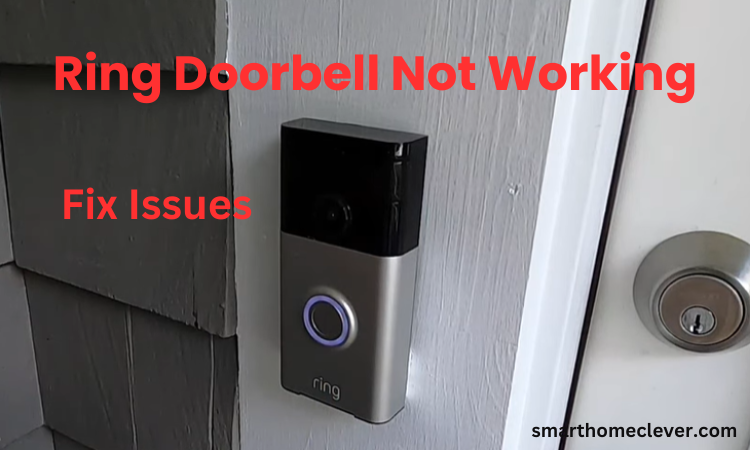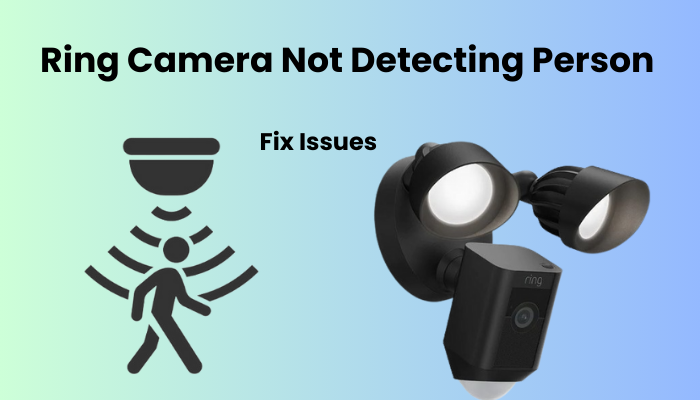Many homes are currently involving security cameras for added security. With different brands of cameras on the market, Blink Camera offers reasonable and easy-to-understand outside and indoor cameras, which will assist with keeping you no problem at all as your home security guard.
However, some users have encountered the problem of Blink Camera not detecting motion and this problem can be due to various reasons. As such numerous customers have reported incidents where their blink cameras have either stopped working completely or have difficulty detecting motion.
Blink Camera usually displays an error message on the screen when there is a problem with your camera system. Online, it may display messages on your mobile phone as “Camera Busy”.
The root cause of these problems can often be a communication breakdown between the sync module and the camera. When the sync module fails to connect to the module, it inhibits the camera’s ability to function properly.
Why Is My Blink Camera Not Detecting Motion?
If your Blink cameras aren’t picking up motion, it’s likely because you haven’t activated the motion detection and armed your system. Double-check that your network is sufficiently strong to help your security arrangement, and analyze your capacity choices for expected issues. Give your Blink camera and network devices a power cycle to refresh and re-initialize the system.
Blink systems rely on various components working together seamlessly. If any of them fail, your camera may not detect motion. Consider the following possibilities:
- Motion detection or the system is disarmed.
- Incorrect camera settings, including sensitivity and activity zones.
- Weak network connection.
- Power loss or low voltage, such as low battery capacity.
- Improper camera placement.
- Interference from other devices.
- Motion occurring outside the detection zone.
Make sure that motion detection is enabled and your system is armed. Walk in front of your camera to test if you’re receiving alerts and motion recordings.
How do you get a motion detector to work?
Blink cameras are designed to activate when they sense motion. This movement is recorded and played back. If your Blink Camera Not Detecting Motion, there are a few potential reasons for this.
When battery-saving features are enabled, the Blink Camera may not be able to detect motion. These features can either slow down the camera’s reaction time or influence it to quit working altogether. To address this, go to the Blink app settings, choose Battery, then Power, and finally, disable Battery Saving.
After turning off the Battery Saving option, return to the Battery settings. This time, select Power, then Blink App, and set it to No Restrictions. This will deactivate all battery-saving settings both in the app and on the camera.
If the Blink camera still doesn’t detect motion after following the steps above, further investigation is needed.
Adjust the Settings for Motion Detection
With Blink cameras, you have the flexibility to tailor your motion detection settings to your liking. You can fine-tune the sensitivity of the motion detection sensor, adjust how long the camera records, and set the frequency of motion detection alerts.
This customization allows you to create a system that perfectly fits your specific needs, cutting down on false alerts and unnecessary triggers.
To enable motion detection and arm your system, follow these steps:
- Open the Blink app.
- Go to the app’s camera view.
- At the bottom of the screen, switch from disarmed to armed.
- Then, tap on the running man icon to activate motion detection.
If this doesn’t work initially, consider tweaking the sensitivity of your camera or modifying the activity zone settings until you start receiving alerts. Increasing sensitivity will result in more triggers and alerts.
Check The Wi-Fi Connection
A robust Wi-Fi connection is paramount for the seamless functioning of your Blink camera’s motion detection capabilities. Begin by assessing the signal strength using the tools provided in the Blink app. Ensure the camera is within optimal range and consider relocating your router or adding Wi-Fi extenders for improved coverage.
Once you’ve optimized signal strength, conduct a practical test by triggering motion events within the camera’s range. Observe the responsiveness and consistency of the camera’s detection. On the off chance that issues continue to happen, dive further into potential impedance sources and do whatever it may take to upgrade your Wi-Fi connection. A solid network frames the establishment for effective motion detection.
Reestablish the connectivity of the modem
It’s possible that the system might be facing a connectivity problem, or the program could be stuck because of an unexpected power outage.
If you’re experiencing network issues, a quick fix is to reset your router. Here’s a simple guide:
- Unplug both your router and modem. If there are batteries, take them out too.
- Wait for about 1 minute.
- Plug them both back in.
- Give it up to 10 minutes for your Wi-Fi to reconnect.
It might take a bit, but once the process is complete, any software glitches or freezing problems should be sorted out.
Make sure your camera is properly aligned
The placement of your Blink camera significantly influences its motion detection capabilities. Verify that your camera is strategically positioned to cover the intended monitoring areas. Take into account variables such as height, angle, and the possibility of obstacles.
Ensure the lens is free from any dirt or debris that might impede motion detection. By fastidiously situating your camera, you improve its capacity to precisely catch pertinent movement. Regularly inspect and adjust its placement to adapt to changes in your environment, guaranteeing optimal performance in safeguarding your home.
Review your motion zone settings
Motion zones dictate the areas monitored by your Blink camera. Scrutinize and adjust these settings to eliminate false alarms and enhance motion detection accuracy. Through the Blink app or online portal, define specific zones where you expect legitimate motion.
Exclude areas prone to irrelevant activity, such as busy streets or swaying trees. Fine-tune sensitivity levels within each zone to match your preferences. Regularly review and update these settings as your surroundings evolve.
The Firmware and Software Updates
If your Blink camera isn’t picking up motion, it could be due to outdated firmware or software. Make sure to keep your camera updated for the best performance and reliability.
Regular firmware and software updates can determine issues, improve execution, and acquaint new elements with your camera.
To check for updates, visit your app store and look for any available updates for the Blink app. If there’s one, please proceed with the update.
Additionally, use the Blink app to verify your camera’s firmware. Follow these simple steps to update it:
- Launch the Blink app on your smartphone or tablet.
- Choose the camera you wish to update.
- Press the settings icon.
- Choose “Device Information.”
- If there’s an update, you’ll see an option to update the firmware. Follow the on-screen directions to finish the interaction.
After updating your Blink system, double-check your settings and test the motion detection to ensure everything is working as expected.
Rebooting the Blink Camera and Establishing a Connection
If you’re having trouble with your Blink camera’s motion detection, a good first step is to reset the camera to clear any potential firmware glitches. Keep in mind that a factory reset will erase all your camera settings and data, and it will unlink the camera from any connected accounts.
Here’s how you can perform a factory reset on your Blink mini camera:
- Locate the reset button situated at the rear of your Blink camera.
- Utilize a paperclip or a comparable item to depress and maintain pressure on the reset button for approximately 10 seconds.
- You’ll notice the LED light on the front of the camera flashing red, indicating the reset process has started.
- Once the LED light ceases flashing, your camera has successfully reverted to its original factory settings.
For cameras connected to a sync module, resetting the module will also reset all paired cameras.
After the reset, you can reconnect your camera using the Blink app:
- Launch the Blink application and select the “+” icon.
- Choose your camera type and scan the QR code.
- Click on “discover devices” and connect to your network.
- Customize your camera settings as needed.
If the motion detection problem persists, it’s a good idea to reach out to Blink support for additional assistance.
Final Thoughts
If your Blink Camera Not Detecting Motion, there could be a variety of reasons behind it, ranging from battery concerns to potential hardware issues. The good news is, that you can likely address most of these issues with some straightforward troubleshooting.
Start by checking that the Motion detection setting is enabled for each camera. If it’s turned off, simply tap the icon to switch it on, and you’ll see the running man icon turn blue.
By following the steps provided in this guide, you should be able to tackle the common issues causing Blink cameras to miss motion detection. Just a bit of patience and persistence, and you’ll have your Blink camera up and running smoothly, ensuring your home stays safe and secure.



